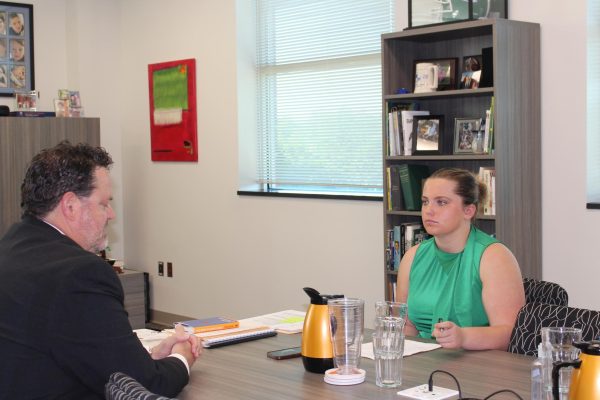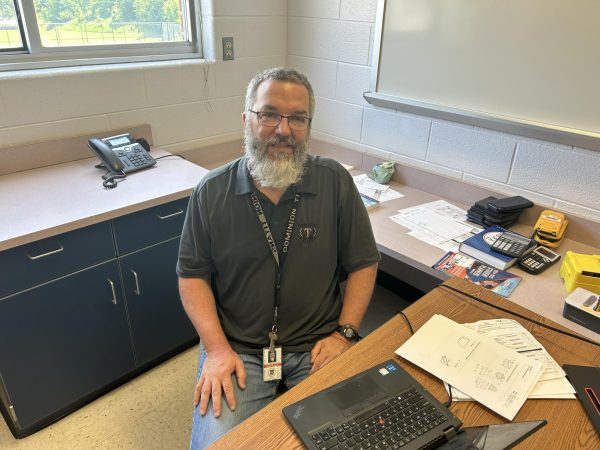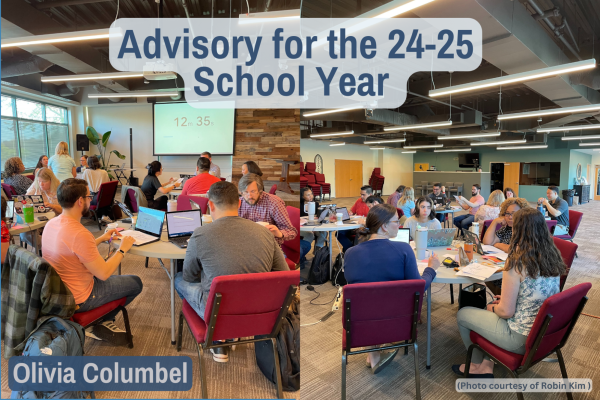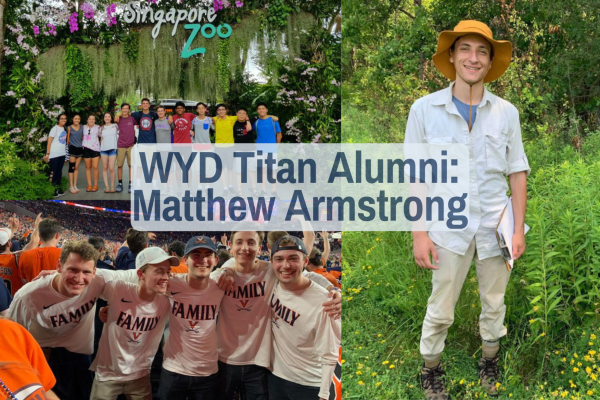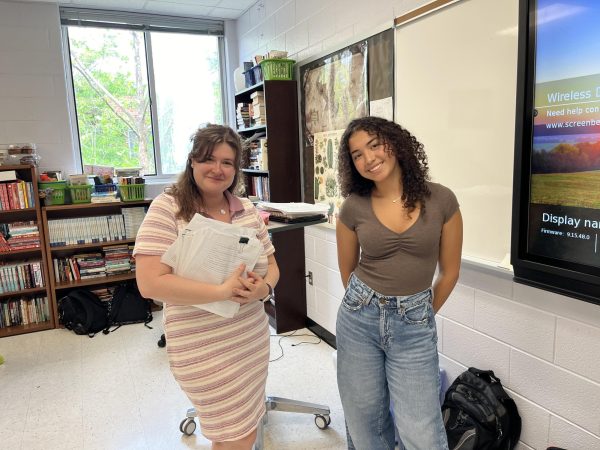History in our Neighborhood
US history and African American studies students were offered a field trip to Alexandria on December 8th to learn about the history of slavery in Virginia.
Looking at artwork in the Freedom House, students got to visit three different historical sites on December 8.
History teachers Julia Marnell and Larissa Nunez-Morel planned an all day field trip to three locations in Alexandria taking 19 US history and African American studies students with them along with two other history teachers.
Marnell said she chose this field trip because she wants students to understand “the inhumanity of slavery, the entrenched racism that persisted, and to make connections to race relations today.”
The field trip had three stops: Freedom House Museum, the Contrabands and Freedmen Memorial Cemetery, and the Alexandria National Cemetery.
Nunez added, “Field Trips can provide an excellent opportunity for deeper learning, making connections to our daily lives, and empowering the students to plan actions for a progressive future.” Although slavery is a difficult topic, Nunez is certain that it is not something to shy away from.
The freedom house museum is a national historic landmark; it used to be one of the worst domestic slave trading spots on the east coast but it later became a place people went to gain freedom. Slaves were considered free in Alexandria; it wasn’t legal, but no one enforced the fugitive act.
The museum consisted of maps, listed names, infographics along with sources, historic artifacts and artwork. The museum guides went through the big information and it was a big opportunity to learn about the history of slavery, specifically in Virginia.
Seeing the different ways they showed sources in the museum helped students learn in different ways. Sage Hurtado, a student that attended the field trip said, “I felt more engaged with topics when I walked through seeing historical artifacts.”
The next stop was the Contrabands and Freedmen Cemetery Memorial. The sidewalk around the cemetery had many light colored bricks which meant there was a body there that they couldn’t move.
This memorial honored African Americans who reached freedom in Alexandria during the Civil War. Besides the graves, there were also big walls with names of identified bodies. When a living descendant is identified a marker is placed by their name; 167 have been identified.
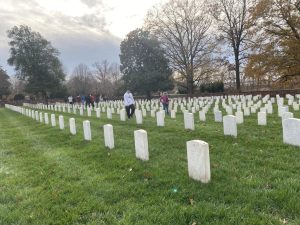
The last stop was the Alexandria National Cemetery, while there the group placed wreaths on the graves of two soldiers from Loudoun County. They also placed pennies on some of the graves to send a message that they are thinking of the soldier and their family.
Emotional stops like a cemetery leave students with a new view on history. Junior Miah White said, “Being there and seeing the amount of damage that was done, I believe was a real experience and I think more topics should be learned that way.”
According to Marnell, field trips are a great way to teach students about harder topics and help them understand. Marnell said, “There are so many historical sites in the area and I want our students to be inspired to visit them.”

Alla Abdelhalim is an Assistant Editor currently serving her second year writing for DHS Press. Alla is a senior that has been involved with the journalism...




